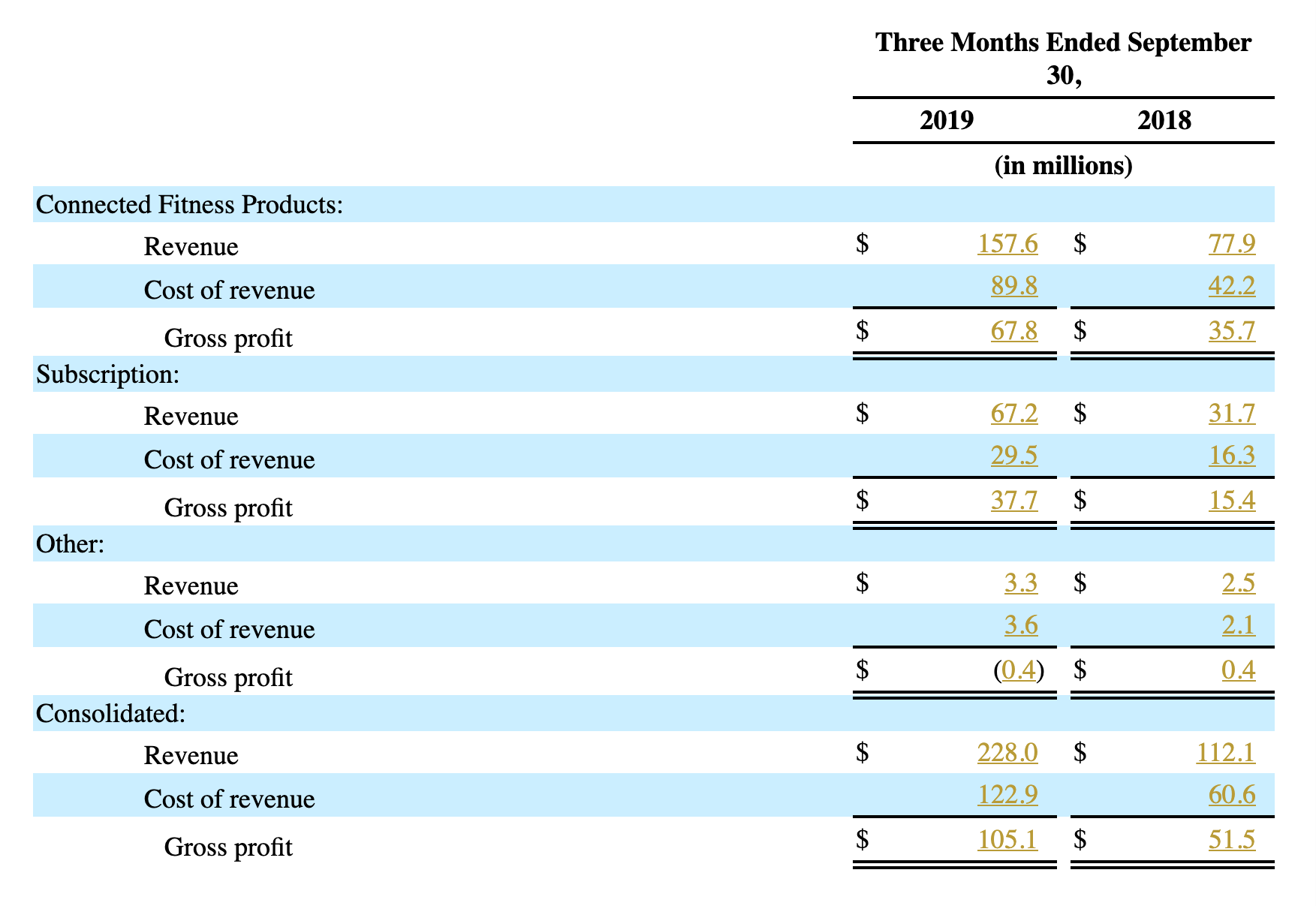We strive to keep pace with current events here at Calcbench, so we spent most of last week pondering the same question that transfixed the rest of the civilized world.
What was Peloton thinking with that crazy Christmas commercial?
Like, if we ever gave Mrs. Calcbench a Christmas gift to help her lose weight, the first thing she’d drop would be us. As to the rest of the Twitterverse commentary about the ad — Was it sexist? Did consumer antipathy really drive Peloton’s stock price down 9 percent in one day? — we offer no opinion.
The controversy did, however, leave us wondering — what does the data tell us about Peloton Interactive ($PTON)?
The data is somewhat scarce, because Peloton only went public in September and so far has filed one quarter of financial statements. Still, you can find a few interesting nuggets even at this early stage.
First, Peloton isn’t turning a profit yet, but it does have growth. Revenue and gross profit in third quarter 2019 both doubled from the year-ago period, while loss from operations fell 8.45 percent to $50.9 million. OK, those numbers are all spinning in the right direction. (Yep, we made that pun.)
When you look at the balance sheet, Peloton has $1.376 billion in cash thanks to that IPO, and only $327.6 million in current liabilities. So while the company isn’t turning a profit yet, it does have ample funds to cover those losses and to keep expanding.
More interesting are Peloton’s disclosures about its segment operations.
Peloton has two primary revenue sources: “Connected Fitness Products,” which are the bikes and treadmills it sells; and subscription to those online fitness instructors who keep yelling at encouraging you via video screen while you cycle your keister off.
Connected Fitness Products are the larger source of revenue for Peloton — $157.6 million, or 69.1 percent of the $228 million in total revenue. But subscription revenue is growing faster, with better gross profit margins. See Figure 1, below.

That’s interesting for two reasons. First, Peloton could always boost subscription revenue per user by simply by raising monthly fees. In that sense Peloton is kinda like Amazon ($AMZN), which can conjure up extra revenue just by increasing the price of its Amazon Prime membership.
Second, however, is that subscription revenue can be more volatile. If the economy turned south for upwardly mobile fitness geeks, they might cancel those subscriptions. Plus, not everyone will buy a Peloton — and once the company approaches that market saturation point, subscription fees will become a more important part of ongoing revenue. So what happens then?
One could ponder all sorts of questions along those lines. Will Peloton introduce cheaper, lower-end equipment to keep growth alive in its Connected Fitness Product line? Will it somehow sell access to other content providers who want to access Pelotonian customers?
The key to finding answers will be delving into the data, quarter after quarter. You can do that with Calcbench.
We leave you with the famed Peloton ad itself, while we go take a lap.